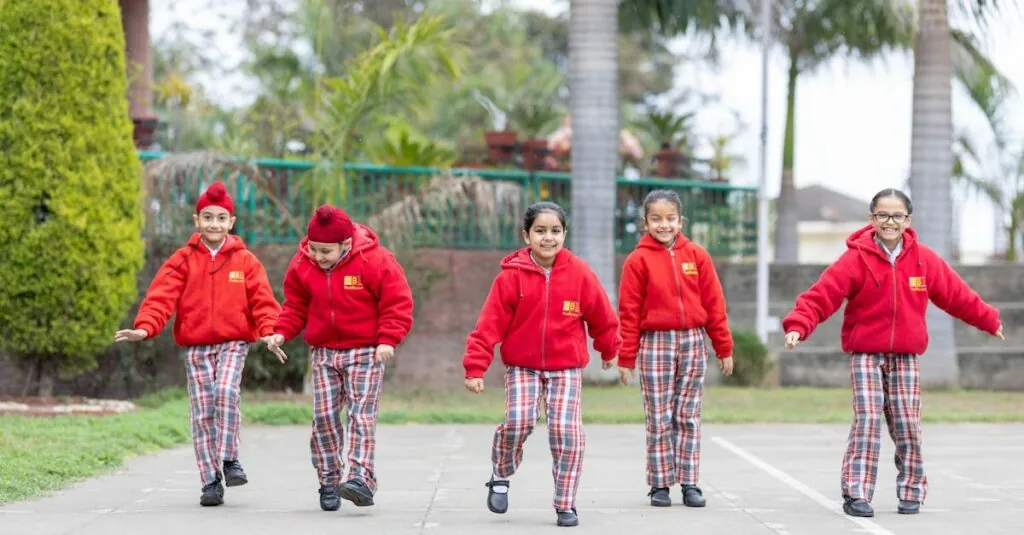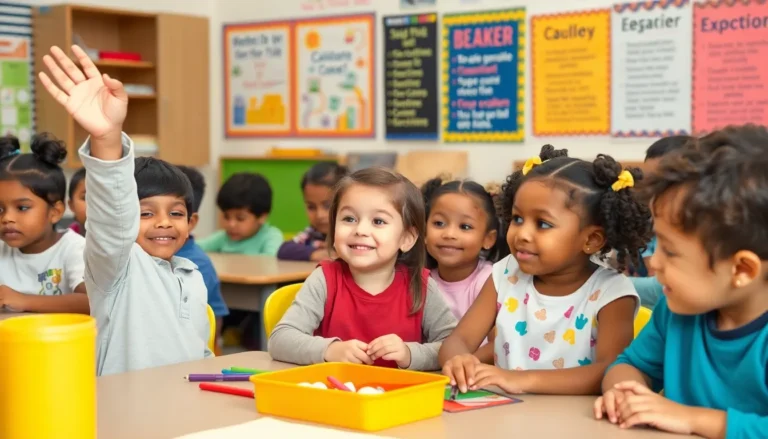Table of Contents
ToggleIn a world where kids are racing to be the next big thing, some are still sporting diapers well into their elementary school years. It sounds like a punchline, but for many families, it’s a reality that brings a mix of challenges and humor. Imagine a classroom filled with kids learning math while one proudly announces, “I need a change!” It’s a scenario that’s both amusing and thought-provoking.
Understanding The Need For Diapers In Older Kids
Some children continue to wear diapers during their elementary school years due to various factors. Understanding these factors helps to address misconceptions and provides insight into their lived experiences.
Reasons For Continued Use
Medical conditions play a significant role in diaper use for older kids. Conditions like autism spectrum disorder or physical disabilities can impact a child’s ability to control bladder and bowel functions. Additionally, developmental delays may hinder some children’s readiness for potty training. Families may also find that nighttime incontinence persists, necessitating the use of diapers during sleep. Parents often prioritize comfort and hygiene for their children, leading to a decision to use diapers instead of placing undue stress on them.
Emotional And Physical Factors
Emotional well-being contributes to the need for diapers in older kids. Children facing anxiety or trauma may struggle with toilet training, leading to diaper dependency. Physical comfort is crucial; a child may resist using the toilet if they feel discomfort or experience pain related to certain medical issues. Social pressures might add to their stress, making familiar routines more appealing. Handling these emotional and physical aspects requires empathy from caregivers and educators, fostering an environment of understanding.
The Social Perception Of Older Kids In Diapers
Older kids in diapers often face unique social perceptions. Society frequently views this situation through a lens of stigma and misunderstanding.
Stigma And Misunderstandings
Stigma arises from misconceptions about the reasons behind diaper use. People may assume these children are simply untrained or overly dependent. Misunderstandings can lead to teasing or bullying, further isolating these kids. Many observers lack awareness of medical conditions that necessitate continued diaper use. Emotional challenges, such as anxiety or previous trauma, also influence a child’s ability to use the toilet. This combination of factors creates a complex social landscape. Awareness and education are essential to shift perceptions.
Supportive Environments
Creating supportive environments significantly benefits children in diapers. Understanding educators and peers foster inclusivity, reducing stigma. Sensitivity reduces anxiety for these children, especially in school settings. Open discussions about the reasons behind diaper use can create empathy. An empathetic approach encourages friendships and social interactions. Schools that prioritize inclusion and kindness enable all children to thrive. Resources for parents, such as support groups, help strengthen this network of understanding.
Parenting Approaches And Strategies
Effective strategies promote understanding and support for older children in diapers. Open communication with the child forms the foundation of a positive approach.
Communication With The Child
Start conversations about their feelings regarding diaper use. Encourage children to express concerns or discomforts openly. Parents should validate emotions, ensuring the child feels heard. Discussing specific reasons for ongoing diaper use can provide clarity. Asking questions about their experiences creates an inviting atmosphere. Understanding the child’s perspective fosters trust and eases anxiety related to potty training. Offering gentle reassurance about gradual transitions helps in managing expectations.
Engaging With Educators And Peers
Building a supportive network within the school community matters greatly. Parents should discuss children’s needs with educators, ensuring cooperation in creating an inclusive environment. Fostering open dialogue about diaper use among peers can reduce stigma. Educators can focus on promoting empathy in classrooms, educating other children on the reasons behind these circumstances. Encouraging friendships helps reduce isolation experienced by older kids in diapers. Providing resources for teachers equips them to handle such situations sensitively. Creating an understanding atmosphere fosters compassion, paving the way for positive interactions.
Case Studies And Real-Life Experiences
Real-life experiences highlight the complexities surrounding elementary school children in diapers. Understanding these situations fosters compassion and awareness.
Testimonials From Parents
Parents often express mixed feelings about their older children using diapers. One mother shared how her child faced bullying, emphasizing the need for supportive peers. Another parent noted the challenges of navigating school settings, highlighting how teachers often lack training to address these unique circumstances. They discussed the importance of validating emotions, reinforcing the idea that every child’s experience is valid. Support groups provided a network for parents to share effective strategies and seek guidance, enabling them to advocate more effectively for their children in various environments.
Insights From Educators
Educators frequently encounter older students in diapers, prompting discussions about sensitivity in classrooms. One teacher mentioned the necessity of awareness training, ensuring fellow students understand the reasons behind a classmate’s situation. Creating an inclusive environment fosters empathy, reducing the likelihood of teasing. Many educators actively encourage open conversations during health classes, allowing children to discuss differences in a supportive setting. Teachers also noted the impact of individualized care plans, ensuring that each child’s needs are met without stigma, promoting acceptance among peers.
Navigating the complexities of elementary school children in diapers requires understanding and compassion. The unique challenges these kids face can be met with supportive environments that promote empathy and inclusivity. By fostering open communication between parents, educators, and peers, it’s possible to create a more accepting atmosphere.
Addressing the stigma surrounding older children in diapers is essential for their emotional well-being. Encouraging conversations about their experiences not only validates their feelings but also helps build friendships. With a collaborative approach, it’s feasible to ensure that every child feels valued and empowered, allowing them to thrive both academically and socially.





